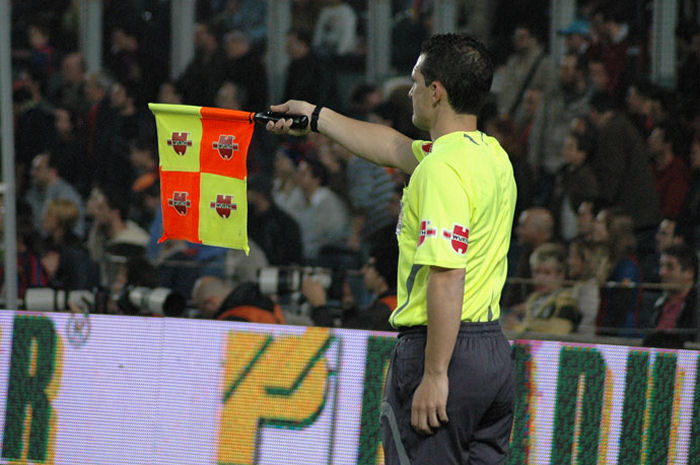The game of millions, the game of generations, continents, and countries. Football unites people
worldwide, makes the hearts of entire countries beat in unison during decisive matches, and creates
the image of entire nations. At the same time, football, like any other sport, has undergone several
revisions and rule changes throughout its history. You can learn more about the history and
influence of football on the economy and politics of entire countries by contacting a
research paper writing service and asking a writer to help you with this topic.
In recent years, football has experienced revolutionary changes in the rules system. VAR technology
has already changed the game in general, and many point out its positive aspects as well as its
negative impact on the pace of the game. Below, we will recall the most famous changes in the rules
of the greatest game.
Introduction of Offside
One of the most significant and one of the first global changes in the rules of the game was the
introduction of offside. It's hard to believe, but this rule has been around since 1863. Interestingly, in
the original version of the game, there had to be at least three opposing players in front of the
attacker for him to be considered in the correct position to attack. In this paradigm, the attacking
teams were severely limited. Still, everything had already changed in 1925 when, instead of 3
opposing players, only two were left, and this immediately led to results. Football became faster and
more entertaining, and the average number of goals in English league matches increased from 2.58
to 3.61 per game.
 source wikipedia
source wikipedia
Now, the accuracy of offside detection is almost 100%, thanks to the VAR system. Nevertheless, new
changes to the rules are being prepared for the beginning of 2025. According to the new rules, a
player will be considered offside if he is ahead of the defender with his whole body. The striker is
caught offside if he is at least one millimeter ahead of the defensive player. However, the rule
applies only to the parts of the body that can score a goal, so the hands do not count.
Introduction of Penalties
Until 1891, there was no such thing as a penalty kick in football. Fouls committed near the goal were
penalized in the same way and were considered free kicks. It is worth saying that the introduction of
penalty kicks into the game was not easy and popular. Many players and fans ridiculed the idea and
called the penalty rule a coward's trap, believing players would fake kicking and beg for penalties. To
be fair, the skeptics were not so far from the truth, and the overreaction to contact on the football
field became a standard practice that only intensified over the years. The
first-ever penalty kick was
taken in the 1891 season in a match between Wolverhampton and Accrington Stanley. Another
important moment in the penalty shootout history was in 1976 when the Czechoslovak goalkeeper
failed to kick the famous Panenka in the Euro final. This is a famous technique when a football player
does not hit with force but deceives the goalkeeper and makes a light blow after the goalkeeper has
made his movement.
Nowadays, it is impossible to imagine football without penalty kicks, and the series of 11-meter kicks
that often decide the winner of title tournaments is considered one of the best highlights in football.
The Rule of Three Substitutions
Originally, football did not involve any substitutions during the game. Teams had to play a full match
in the starting lineup, and even if someone was injured, the team played the match in the minority.
Substitutions were first allowed in 1958 at the World Cup, but only for injured players. In 1965, FIFA
expanded the possibilities for coaches and allowed one tactical substitution per match. This number
was later increased to two, and in 1995, the three substitutions rule became the standard for almost
30 years. However, in 2022, the rule of five substitutions, initially tried in 2020, was adopted.
The substitutions dramatically changed the approach to building tactics for the game, and coaches
got more options for building the game and getting out of crisis situations that could happen during
the match. This is a kind of way to reinsure and anticipate all options. For example, when a student
wants to
buy an essay, he familiarizes himself with all the services of the service. Hence, the
coachesgo through all the possible substitution options for the match.
Introduction of Red and Yellow Cards
Before 1970, there was no such thing as a yellow and red card. Players were warned verbally and
could even be ordered to leave the field in case of a serious offense, but there were no standards.
That all changed after 1966 when, at the World Cup, an Argentine player simply refused to leave the
field. After that, FIFA began to develop a system of clear warnings in the form of cards.
 source wikipedia
source wikipedia
The record holder for the number of red cards shown for one match is referee Valentin Ivanov, who,
in the 1/8 finals between Portugal and the Netherlands in 2006 for the match, showed 20 cards, 4 of
which were red.
The Golden Goal Rule and Its Abolition
The "golden goal" rule was introduced in the 1990s. It determined the
winner of the match in extra time by the first goal scored. The rule lasted only ten years as it was considered to make teams play
too cautiously. But it left its mark on emotions in history. Just remember the legendary Euro 1996
final, when Germany defeated the Czech Republic thanks to Birkhoff's golden goal.
Conclusion
The main change in football in recent years remains VAR. However, the game will undoubtedly
undergo some changes or clarifications in the rules in the future. We can only hope that these
changes will not contradict the spirit of the game but only improve its quality.
Recently added
-
Is Amorim The Man To Get Manchester Finally United -
Rodri Deservingly Wins, But That Isnt The Ballon dOr Headline -
Live Football Scores and Analysis on Upcoming Football Matches in India -
The Most Famous Rule Changes in Football History -
From transfers to triumphs: evaluating the impact of new lineups on success